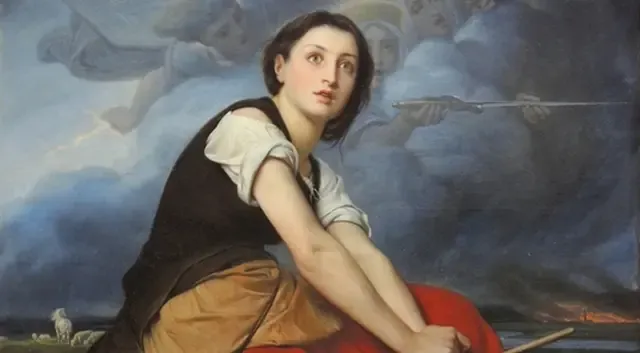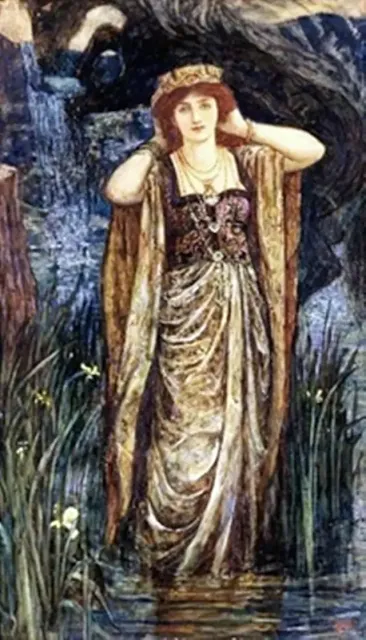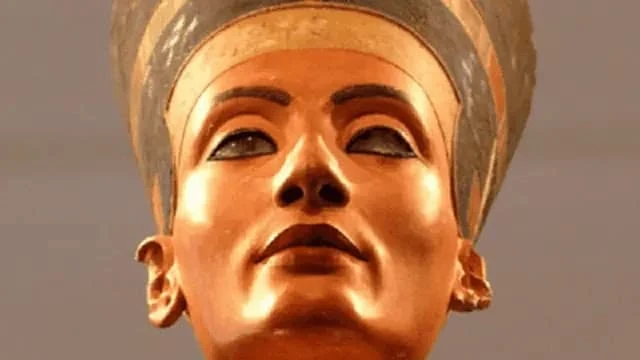The ages of history have been embodied by many prominent figures who have captured hearts and minds with their beauty and elegance. In this article, we will review the 10 most beautiful women from ancient times, who left an unforgettable mark on the pages of history. We will delve into the details of each of their lives, starting from the beauty legends of ancient civilizations, such as Egypt and Greece, all the way to the impact they left on the arts of beauty and literature. Join us on a journey through time to discover together the factors that made these women icons of beauty and grace.

List of 10 Most Beautiful Women from the Ancient World
Amidst the rich history, there are female figures who have captured hearts with their beauty and charm. In this article, we review the 10 most beautiful women from ancient times, who were not only beautiful but also famous throughout time. Despite the different concepts of beauty, this list brings us together to shed light on the icons of beauty from ancient civilizations such as Egypt and Greece.
10. Joan of Arc - 14th century

An icon of courage and inspiration, Joan of Arc takes us on a journey through the 14th century when she was a military leader and the Queen of Hearts in France. Considered one of the 10 most beautiful women of antiquity, she was portrayed as a strong and gorgeous heroine, combining intelligence and beauty, like Cleopatra and Aphrodite. Joan was wronged and burned at the stake, but her courage and noble heart earned her an eternal place in memory.
9. Aspasia - 5th century

Considered one of the 10 most beautiful women of antiquity, Aspasia embodied physical beauty and a brilliant mind in the ancient Greek world. She was more than just a symbol of physical beauty; she was hailed as an influential force in history, as her home in Athens became a center of thought and learning, attracting many prominent philosophers such as Socrates.
In Lydia Maria Child’s novel Philothea, Aspasia is reimagined as a fascinating woman with a charismatic personality. Despite some negative views about her, Aspasia remains an embodiment of beauty and intelligence, making her an essential figure in understanding the role of women in history.
8. Lucrezia Borgia - 14th-15th century

Lucrezia Borgia is an icon of medieval beauty, distinguished by her stunning appearance that left an unforgettable impression in Italy during the 14th and 15th centuries. With her thick blonde hair, fair skin, and captivating facial features, she was considered one of the most beautiful women of her time. The daughter of Pope Alexander VI, she gained fame not only for her beauty but also for her great care for her hair. The world witnessed the impact of her beauty, as she had hazel eyes that changed colors, which added to her mysterious charm. Lucrezia is an important part of the story of antiquity's 10 most beautiful women.
7. Salome - 1st century

Salome, the legendary dancer immortalized in the pages of history, is considered one of the prominent figures in the list of the 10 most beautiful women of antiquity. The daughter of Herod II and Herodias, she was famous not only for her beauty but also for her captivating dance that captured hearts and attention.
Salome is known in the Bible as the bearer of the head of John the Baptist after his execution, and her story embodies a drama that has been told through generations in various texts. Since then, Salome has been embodied in many works of art, from classical paintings to contemporary films, continuing to capture the collective memory. Although her beauty may not be comparable to others, the powerful charm of her dance and the immediate impact she had on history made her an unforgettable figure.
6. Lady Godiva - 11th century

Lady Godiva, the beautiful noble wife of Leofric, Earl of Mercia, stands out as one of the most prominent figures in the list of the 10 most beautiful women of antiquity. Godiva was known for her generous donations to churches and charities, but her most famous story is that she defied the heavy taxes imposed by her husband on the citizens of Coventry.
After many attempts, Leofric agreed to reduce the taxes only if Godiva rode naked on a horse through the streets of the city. Believing in the rights of her people, Godiva took this bold step, covering her body with her long hair, making her a symbol of courage and sacrifice.
Despite doubts about the veracity of this story, Godiva was a real person in the 11th century, and it is known that she helped found the Benedictine Abbey in Coventry with her husband.
5. Samyukta - 12th century

Samyukta, daughter of Jaichand, King of Kannauj, was a beauty who became the wife of Prince Prithviraj Chauhan, the king of the Chauhan clan. Considered one of the most beautiful women in ancient Indian history, Samyukta was a symbol of romance and passion.
Samyukta captured Prithviraj's heart with her reputation and courage, while he fell in love with her for her loyalty and devotion. Their epic story has been reimagined in many works of art, including the 1962 film Rani Samyukta, highlighting their profound influence on Indian culture.
4. Guinevere - Born in 490 AD

Guinevere, the noble and beautiful queen, is considered one of the most prominent figures in ancient history, as she was the wife of King Arthur, the legendary ruler of Britain. Guinevere is described as one of the greatest beauties of Britain, but her life was filled with tragedies due to her beauty that brought her problems.
Her romantic relationship with Sir Lancelot, King Arthur's knight, is one of the most important love stories in medieval literature, making her one of the most desirable women in history. King Arthur himself is said to have considered Guinevere the most beautiful woman of all, and today she is considered a symbol of beauty and charm in the ancient world.
Although Guinevere may be a fictional character, she still embodies legend and unforgettable beauty.
3. Phryne - 4th century BC

Phryne is one of the most famous figures of beauty in antiquity, and she still inspires admiration through her magnificent statues and paintings. Her real name is Menarete, and she was known for her captivating beauty and golden skin, which earned her the nickname “Phrine” meaning “frog”.
Phryne earned praise from Athenaeus, the brilliant Greek poet, who praised her beauty on several occasions. At the festivals of Eleusinia and Poseidon, she would show her boldness by letting her hair flow as she entered the sea naked, inspiring the artist Apelles to create the famous image of Aphrodite Anadyomene.
Phryne is considered a symbol of beauty and mystery in history and deserves her place among the 10 most beautiful women of antiquity.
2. Nefertiti - Born c. 1370 BC | Died c. 1330 BC

Queen Nefertiti, is considered the most beautiful queen in the history of ancient Egypt, and her name means "beauty has come." Although her lineage is still not definitively known, she is considered one of the most famous queens alongside Cleopatra.
Nefertiti is world-famous thanks to her magnificent bust, which was restored in 1913, and has become a symbol of feminine beauty and power. The queen was also known for her luxurious dresses and modern style that was striking and attractive, making her the embodiment of beauty in her era.
Nefertiti has earned her place as one of the 10 most beautiful women in history, and her influence on the world of beauty and art is still felt today.
1. Cleopatra VII - Born 69 BC | Died 30 BC

Cleopatra is considered a symbol of beauty, strength, and intelligence, securing her place as one of the most beautiful women of antiquity. She was the queen of Ptolemaic Egypt and the last known pharaoh of the era. Her extraordinary beauty has been described in many literary works, making her the embodiment of charm and allure in Western culture to this day.
Cleopatra has influenced the arts and media, with her story portrayed in popular films such as Cleopatra in 1934 and 1963, as well as great literary works such as William Shakespeare's tragedy Antony and Cleopatra and George Bernard Shaw's play Caesar and Cleopatra.